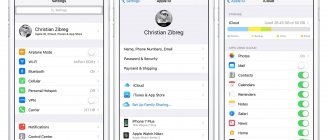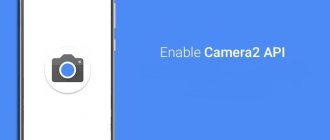SwiftKey is an on-screen keyboard from Microsoft for Android smartphones. This keyboard is a competitor to Google's Gboard, which is why many manufacturers pre-install both keyboards in their firmware. We'll tell you why Swiftkey is remarkable, we'll mention the differences from competitors and how to install it on your device.
Features and Features
In terms of functionality, the SwiftKey keyboard is similar to its analogues. This applies to:
- entering text by tapping on the keys, connecting letters by swiping (called flow) or using handwriting;
- check spelling and correct errors in the text;
- built-in emoji displayed in the quick access menu;
- selecting a theme from the built-in store;
- the ability to customize the size of the keys and the location of the keyboard on the screen;
- multilingual with support for more than 300 languages;
- the presence of a vibration response when tapping on the keys.
And the winner...
After several days of experimenting with the keyboards on our list, it became clear that the best typewriter was the SwiftKey. Unparalleled auto-correction based on artificial intelligence and predicting the next word simply makes entering text incredibly easy. Flawless gesture input further sets SwiftKey apart from the competition. But recent developments have tarnished its reputation a bit due to privacy issues. Some people report that the suggestions include words from other user dictionaries, including other people's email addresses. The SwiftKey team says they have already fixed this problem. However, the wound doesn't seem to be completely healed, so we don't recommend installing SwiftKey until the developers fix the problem. Therefore, the default winner is Google Keyboard! It does not send out your data - email address and online search history. The only complaints are the inability to customize everything for yourself. But the latest update came with several customization options. It turns out there are no flaws. Still, there is no keyboard size that suits everyone. Much depends on your habits and needs. You need gesture input, Swype is at your service. You need individual settings, TouchPal is the undoubted leader. And the Fleksy feature set puts this keyboard in a category of its own.
Read also: How to share Wi-Fi password via QR code on Android
Differences from competitors
Compared to similar products, the Microsoft application can recognize the user’s writing style and adapt to it: by entering the first 3 letters, the user will be prompted to insert the full word and compose a sentence from the options that appear. New phrases or expressions are automatically entered into the dictionary, so the number of combinations grows with each message printed.
You can personalize the software’s “vocabulary” from selected sources, such as social networks, RSS feeds or email. To avoid having to learn Swift Key on several devices at once, cloud synchronization of dictionaries is provided under a single account: the user writes on the phone, and then uses the new options on the tablet.
The application can recognize writing style.
Advantages and disadvantages
The advantages include:
- Free base.
- The above mentioned writing style recognition.
- Availability of advanced settings for personalizing the window with letters.
- View statistics of entered words, sentences, sent messages.
- Cloud synchronization between all devices connected to one account and using a keyboard.
- There is a beta version, which contains early prototypes of functions or bug fixes that will then be included in the main revision.
Of the negative points:
- The keys remain small even when set to the maximum size in the settings.
- Errors occur when the software suggests words that are inappropriate or not used by the user.
- Depending on the device manufacturer and installed firmware, problems with calling the input keyboard may occur.
The application has a function for viewing statistics of entered words.
Google Keyboard
Google has always had its own keyboard for Nexus devices, but not too long ago they finally made it available on Google Play for all phones. Google Keyboard certainly reflects its creators, and its hallmark is its simplicity and cool design.
Google Keyboard uses material design, which means it will blend wonderfully with your Android apps. When using the keyboard, you can easily switch between the regular input method and the gesture input method, which supports typing with two fingers at the same time. In general, the application is characterized by an excellent set of functions, and an important fact is that the keyboard requires virtually no settings. Regarding the disadvantages, we can say that they can also be the strengths of Google Keyboard - depending on which side you look at. Not everyone will be happy with the “install and play” motto that the developers of this application adhere to, due to the fact that the keyboard has very few individual settings. Although, the latest update added several such options, including color themes.
Key facts about Google Keyboard:
- Gesture input: yes
- Line numbering: no
- User training yes
- Predict next word: yes
- Updated dictionary: yes
- Dictionary synchronization: yes
- Topics: yes
- Emoji: no
- GIF support: no
- Dual language support: no
- Best Feature: Material Design:
- Pro version price: free
Where to download the keyboard and how to install
The application is distributed officially through the Google Play application stores for Android 5.0 (or higher) and the App Store for iOS starting from version 11. Anyone who wants to install the previous revision can visit the application thread on the 4pda forum.
To install the program:
- Go to the app store and type Swiftkey in the search bar.
- Open the software window and click “Install”.
Owners of Android smartphones can download and unpack the apk file:
- Download the installer from the forum mentioned above.
- Navigate to the folder with your downloaded documents using the built-in explorer.
- Click on the installation file and agree to unpack it on your device.
When an error appears:
- Go to your device settings and find the “Security” category.
- In the list of functions, select “Install from third-party sources.”
- Allow the installation of software downloaded on your smartphone or tablet.
- Repeat the instructions as described above.
The method for allowing installation from an unverified source differs from the firmware installed on the device.
You can download the application through the Google Play and App Store app stores.
On Xiaomi smartphones, SwiftKey is pre-installed in the firmware to set it as the main one by default:
- Go to the settings and among the functions select “Advanced” or “Advanced settings” - depending on the version of the shell.
- Next, go to “Language and Input”.
- Open "Current Keyboard" under the "Keyboard & Input Methods" category.
- Select "SwiftKey" from the layout options.
To enable a regular keyboard or disable the solution from Microsoft, repeat the instructions described above, just tap on a different option.
Diary of a searcher for the best keyboard for iOS. Part 3 - SwiftKey
It's time to share with you my impressions of the third week of experimenting with third-party keyboards. Let me remind you that, according to the conditions of this experiment, I give each keyboard one week to conquer my heart, after which I write a text dedicated to it with its help. Over the past time, I’ve already forgotten what it’s like to type text using a standard keyboard, and I’m already comparing my new test subject with competitors from the App Store. I was supposed to devote the past week to the Swype keyboard, but their application discovered a critical problem related to the inability to load the Russian language, about which there are quite a lot of complaints in the App Store. For this reason, Swype's performance was postponed with the possibility of complete disqualification if the developers did not have time to fix the bug. This allowed the wonderful SwiftKey keyboard to jump out of line, and all subsequent text will be only about it.
SwiftKey
For the first time during the experiment last week, negative thoughts about the keyboard I was using did not pop up in my head.
Either I'm used to the shortcomings of third-party keyboards, or SwiftKey is really good and I'm leaning more towards the latter. Of course, it is not without its shortcomings, but, following tradition, we will start with the good. Advantages
Before SwiftKey, I spent a week with the Fleksy keyboard and a week with the Minuum keyboard. The main idea of these two keyboards was a smart adjustment that turns a set of meaningless symbols into words by analyzing misses on awkwardly placed keys. What a pleasure it is to then use a keyboard that expects you to accurately hit the buttons and does not interfere with this in any way. This is how I smoothly approached the first positive feature of SwiftKey - the keys of this keyboard are located conveniently in any screen orientation and on any device, be it an iPhone or iPad.
One of the most important and convenient features of SwiftKey is its dictionary. You can give the keyboard access to your social networks, mail, contacts list and notes, and the keyboard will analyze your writing habits and style. The dictionary is stored in the cloud and synchronized between all your devices, which is very convenient. It's not as useful for proofreading as it is for predictive typing, which is another useful feature of SwiftKey. Unlike a standard keyboard, SwiftKey's predictive typing works great with the Russian language, and in some cases you literally don't have to touch the keys to type entire words and sentences.
I have serious doubts that the Swype typing method has any future, however, despite all its shortcomings, which I will definitely talk about below, sometimes typing words with gestures does seem convenient. As you might have already guessed, SwiftKey supports this typing method, although it is called Flow here, but the meaning does not change. Among other small but important advantages of the keyboard, I would highlight the presence of a separate button for selecting emoji and quite smart work with punctuation marks. SwiftKey automatically removes the space between the punctuation mark and the word it automatically inserts, and not all keyboards can boast of this detail. Let's summarize all the good things with a list:
- Convenient key layout
- Smart user dictionary
- Data storage in the cloud and synchronization between devices
- Well implemented predictive set
- Availability of Flow input mode
- Separate key for selecting emoji
- Convenience of typing punctuation marks
Flaws
The main drawback of many third-party keyboards and SwiftKey in particular is their unstable operation. This one drawback can cover up any advantages. Sometimes the keyboard simply won't appear until you restart the app completely, and while this doesn't happen as often with SwiftKey as it does with Minuum, it does happen more than once a day. Another obvious drawback of SwiftKey is the inconvenient language switching. So far, the leader in the convenience of changing the typing language is the Fleksy keyboard, in which you just need to swipe the space bar once. In SwiftKey, you'll need to hold down the space bar and then select one of the pop-up languages. This takes a lot of time.
Keyboards without gesture typing have managed to teach me to delete an entire word by swiping left. Of course, this doesn’t work with Swype keyboards, and when you type a completely wrong word in Flow typing mode, it’s extremely inconvenient to delete it later. The point of a wonderful predictive set is also lost. We have to choose. And I would chalk all this up not only to the shortcomings of SwiftKey, but also to the shortcomings of the gesture typing method itself. By the way, I already wrote somewhere that Swype on iPad is not very convenient due to the screen size. Typing is more like drawing a life-size portrait with your finger.
The last drawback that I would like to talk about in more detail before we move on to the list is the appearance of the keyboard. Visually, it will look better on Android, and its appearance doesn't fit well with iOS. There are dark, light and festive themes to choose from. There is no dynamic switching between light and dark themes like in Fleksy, and bright symbols are very noticeable. The list of shortcomings will be short:
- Unstable work
- Disadvantage of Flow
- Inconvenient language switching
- Appearance
- No dictation
General impressions
Despite the fact that SwiftKey has more advantages than disadvantages, the keyboard's shortcomings are quite serious and can spoil the impression of use. Nevertheless, for the first time in three weeks of experimentation, I had positive impressions of a third-party keyboard. Is it possible to find something better in the App Store? We will test it empirically.
Installation
The keyboard is available for free at this link.
Using SwiftKey
When the application is installed as the main one, we will tell you how to use it. To switch to Russian, activate its support in the settings:
- Open the software, select “Multilingual” in the first window.
- Find Russian in the list or use the search bar. Click a language to start downloading the dictionary.
- You will be prompted to select a layout format.
- In total, you can add up to 5 languages at the same time. If what you need is not in the list, scroll to the bottom of the page and go to “All languages”.
To translate between layouts when typing, swipe on the spacebar or hold it down with your finger until a list of available options appears.
When you need to work with sounds:
- Go to Sound and Vibration.
- Turn off/on the volume after pressing, adjust the level with the slider.
- Activate or deactivate built-in vibration.
When to remove hints:
- Expand "Layouts and Keys".
- At the bottom of the window, move the "Key Tips" switch to the inactive position.
An intuitive interface allows you to customize the application to suit the requirements of any user.
Tips for users
If you want to remove third-party software from your phone, users are faced with SwiftKey Preloaded Languages - this is a set of language packs loaded by the application. It should not be uninstalled by those who use the on-screen keyboard on a regular basis; others may erase data received from it.
SwiftKey is a universal on-screen keyboard for Android smartphones and tablets, downloaded from the Play Market more than 500 million times. A keyboard can act as an analogue to a built-in solution, replace a project from Google and can appeal to users with its intuitive typing.











